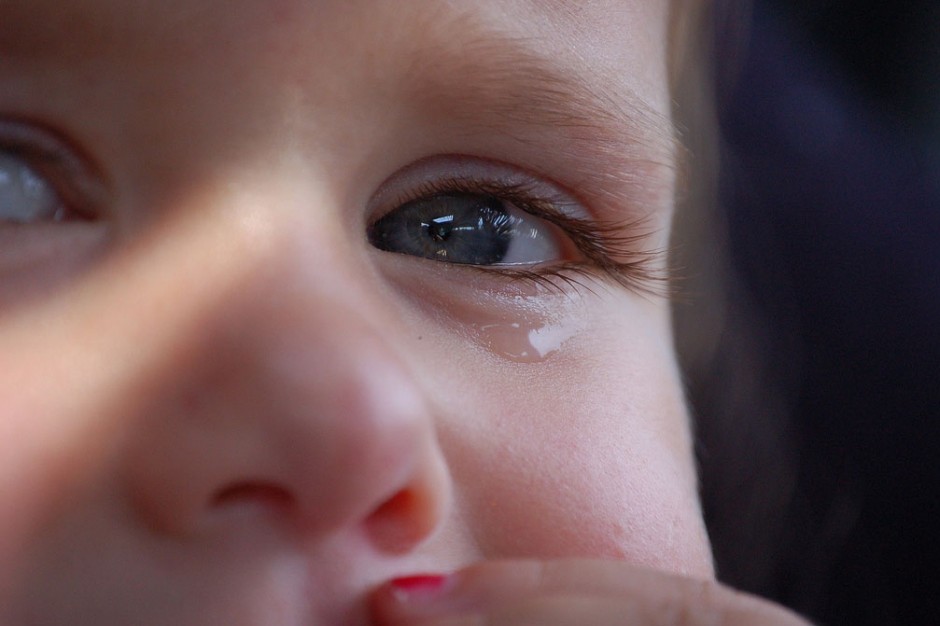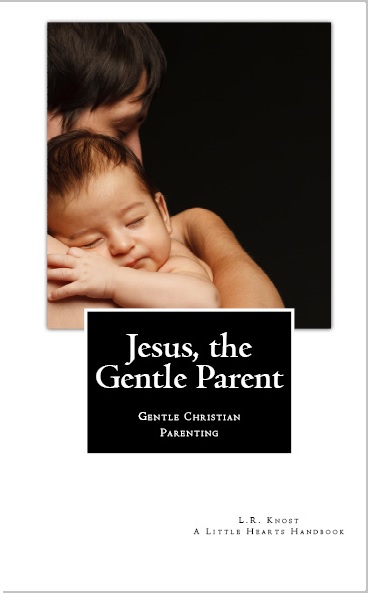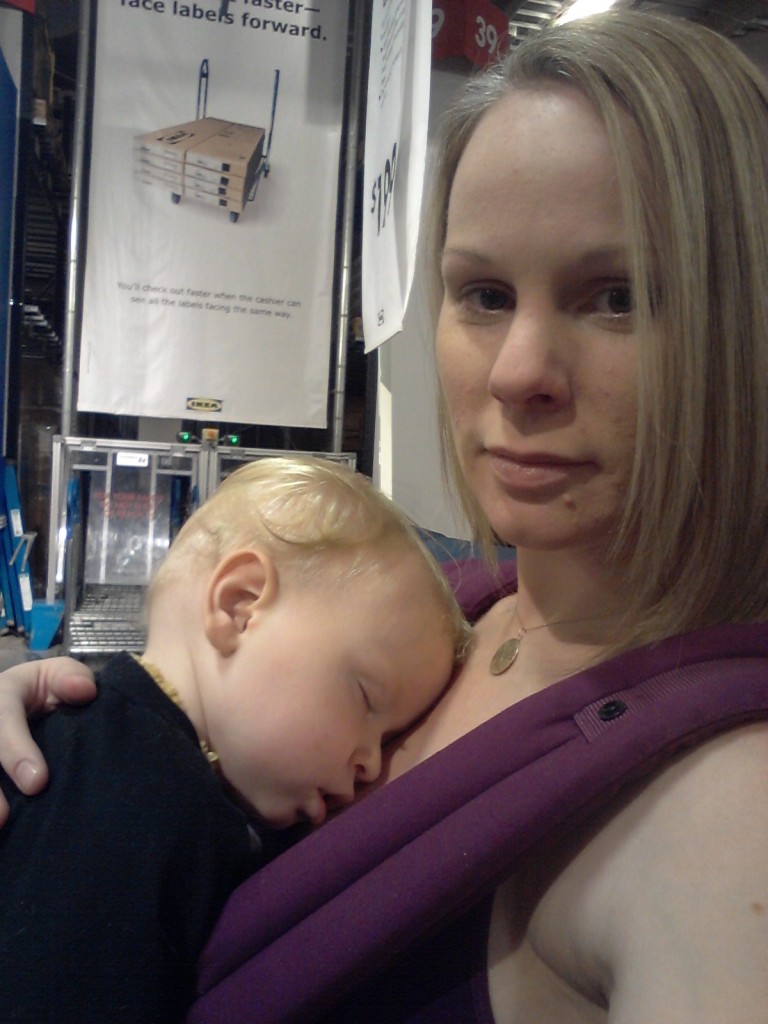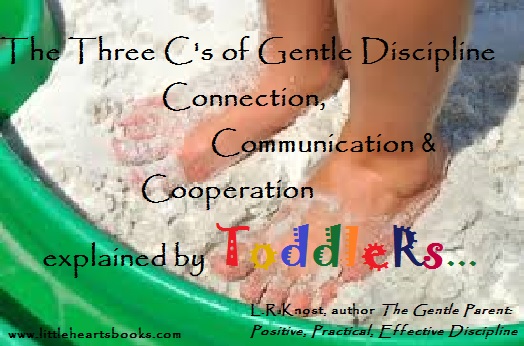[Excerpt reprinted from Jesus, the Gentle Parent: Gentle Christian Parenting by L.R.Knost. Two Thousand Kisses a Day: Gentle Parenting Through the Ages and Stages; Whispers Through Time: Communication Through the Ages and Stages of Childhood; and The Gentle Parent: Positive, Practical, Effective Discipline by L.R.Knost also available on Amazon and through other major retailers.]
~~~~~~~~~~~~~~~~~~~~~
“Let us then approach God’s throne of grace with confidence, so that we may receive mercy and find grace to help us in our time of need.”
Hebrews 4:16
“Many parents in using the rod of correction on their child do so with an obvious lack of vigor and often stop short of the child’s will being completely broken … Both my wife and I have often remarked that it is good that one of our children was not our firstborn. This particular child who came along later in our family was extremely willful and rebellious toward our authority and would often require sessions of correction lasting from one to two hours in length before the will would finally be broken … Even though you may think these methods of correction that God has ordered parents to carry out are bestial, abusive, and unloving, you are the one who is bestial, abusive, and unloving if you don’t obey God in this matter. Moreover, if you do not obey God your child likely will not be saved unless the Lord supernaturally in His mercy does so despite your disobedience.” (Ronald E. Williams, The Correction and Salvation of Children)
“She then administers about ten slow, patient licks on his bare legs. He cries in pain. If he continues to show defiance by jerking around and defending himself, or by expressing anger, then she will wait a moment and again lecture him and again spank him. When it is obvious he is totally broken, she will hand him the rag and very calmly say, “Johnny, clean up your mess.” He should very contritely wipe up the water [about spanking a 3-year-old]” (Pearl, p. 62) …“Never reward delayed obedience by reversing the sentence. And, unless all else fails, don’t drag him to the place of cleansing. Part of his training is to come submissively. However, if you are just beginning to institute training on an already rebellious child, who runs from discipline and is too incoherent to listen, then use whatever force is necessary to bring him to bay. If you have to sit on him to spank him then do not hesitate. And hold him there until he is surrendered. Prove that you are bigger, tougher, more patiently enduring and are unmoved by his wailing. Defeat him totally. Accept no conditions for surrender. No compromise. You are to rule over him as a benevolent sovereign. Your word is final (p. 49)” (Michael Pearl, To Train Up a Child)
Where, exactly, did the pseudo-Biblical idea that a parent must break a child’s will originate? How did a person’s God-given will, their freedom of choice, their strength and individuality, come to be seen as the root of all sin  that must be purged? At what point did “defeating” a child so that they are “totally broken” become the goal of Christian parenting?
that must be purged? At what point did “defeating” a child so that they are “totally broken” become the goal of Christian parenting?
Let’s go back to the model of servant leadership set by Jesus who said, “I stand at the door and knock…” (Revelations 3:20) Knock what? Knock humans on their backsides and pin them down while pummelling them until they are utterly defeated? Knock small children around until they are totally broken?
No, of course not. Jesus says, “I stand at the door and knock. If anyone hears my voice and opens the door, I will come in and eat with that person, and they with me.” Jesus doesn’t barge in making demands to prove how big and tough he is. Jesus invites us to open the door of our lives and to invite him in as an honored guest, in return.
Look also at Deuteronomy 30:19 where God shares that it is from him that our ability to choose originates, “I have set before you life and death, blessing and curse; therefore choose life, that you and your descendants may live.” Note that God doesn’t demand that we submit our free, God-given will, our ability to choose, to him. He simply invites us to align our will with his.
And look at James 4:8, “Draw near to God and He will draw near to you.” God doesn’t chase us down, “sit on” us, or “use whatever force is necessary” (see Pearl quote above) to strong-arm us into submission. He reaches out to us and inspires us and opens his arms to us, inviting us into the safety and comfort and wholeness of a relationship with Love Himself.
Our will is a gift, an opportunity to choose right from wrong, and the vehicle through which God calls us to choose his Son. Without this amazing and wonderful gift, without the freedom to use our free will, Jesus’ suffering and death on the Cross would be pointless.
Sin is a moot point in light of the grace we’ve been given. Grace is the point. The whole point. Everything leading up to the Cross pointed to the Cross, everything was settled on the Cross, and on the Cross in the outstretched  arms of Jesus grace was born. Sin only matters in the sense that when we voluntarily choose to stay within the boundaries God has given us, we are closer to him, more in-tune with him, and more aligned with his will. He does not stray from us, not ever. But we do stray from him. We are human, and as humans we learn by doing, by experiencing, by exercising our free will as we stretch and grow and discover and make mistakes and overcome life and are overcome by life, each trial and failure and success a learning experience. God doesn’t chase us down and crash through the walls we’ve put up and drag us back to repentance. He waits for us, always available, always forgiving, always loving us unconditionally, but never giving up as he calls out to us, inviting us gently to himself.
arms of Jesus grace was born. Sin only matters in the sense that when we voluntarily choose to stay within the boundaries God has given us, we are closer to him, more in-tune with him, and more aligned with his will. He does not stray from us, not ever. But we do stray from him. We are human, and as humans we learn by doing, by experiencing, by exercising our free will as we stretch and grow and discover and make mistakes and overcome life and are overcome by life, each trial and failure and success a learning experience. God doesn’t chase us down and crash through the walls we’ve put up and drag us back to repentance. He waits for us, always available, always forgiving, always loving us unconditionally, but never giving up as he calls out to us, inviting us gently to himself.
When it comes to parenting, we all know that some of God’s children are created with a remarkable strength of will, a powerful drive to explore and discover, an insatiable thirst for knowledge, an incredible need to know and be known, and with more energy than can be contained in a small body. Their frequent challenges to ‘the way things are’ can feel overwhelming to the most patient of parents, and their sometimes epic meltdowns when all of that extreme energy explodes out of their small frames can act like a tidal wave of emotion that gets everyone swept up in the maelstrom. These children who are given the gift of an indomitable spirit have all of the amazing characteristics of future world leaders, but their gifts need to be grown and nurtured and developed, not contained, stunted, and crushed.
A popular child-training book by Dr. James Dobson, The New Strong-Willed Child, has a markedly different approach to parenting strong-willed children, however: “Some strong-willed children absolutely demand to be spanked, and their wishes should be granted. . . two or three stinging strokes on the legs or buttocks with a switch are usually sufficient to emphasize the point, ‘You must obey me.’” In addition to the disputable Biblical interpretations of the ‘rod’ verses and the misuse of the word ‘obey’ in translating from the original language of the Bible, there is a fundamental difference in philosophies revealed here. In the positive parenting approach, children are born perfect and need only to be guided through the normal stages and behaviors of childhood. In the punitive parenting approach, children are born sinful and must be forced to submit to superior authority.
On a purely logical level, why would we fight a child for control when what we really want is for them to be in control of themselves? Why not, instead, help them to process those big emotions and learn how to direct their own energy and develop their own ability to control themselves? Why not follow Jesus’ example and invite our strong little future leaders to walk alongside us in tandem to learn and grow and discover together for the oh-so-brief season of their childhood?
On a practical level, though, the question is, “How can we partner with our children in positive and peaceful ways to guide them gently and effectively?”
Here is a chapter from The Gentle Parent: Positive, Practical, Effective Discipline to get you started on your gentle journey with your own little future leaders:
‘The Gift of a Strong-Willed Child’
There are some children who are born into the world with the incredible life-gift of a strong will and an indomitable spirit. These children are often deeply misunderstood, and there are rows of books lining bookstore shelves with instructions about how to break their will, how to subdue their spirit, how to force their obedience. What an incredible loss of leadership, passion, and insight this world suffers when parents follow these punitive parenting practices. Not only can we parent these gifted children with gentleness and respect, but the gifts we get in return are priceless!
Take a look at some of the common descriptions used when referring to the characteristics of a strong-willed child:
Demanding, Insistent, Stubborn, Bossy, Cocky, Difficult, Challenging, Fixated, Contrary, Rebellious, Defiant
Now look at some of the common characteristics of adults who are world leaders, CEO’s, entrepreneurs, innovators, world-class athletes, and the like:
Decisive, Determined, Persistent, Authoritative, Confident, Valiant, Gutsy, Committed, Resourceful, Nonconforming,Bold
Note that the characteristics are the same, but the characterizations are negative when applied to a child and positive when applied to an adult.
Other characteristics of strong-willed children that coincide with the characteristics of adult leaders in their fields are:
- They are typically highly creative and intelligent.
- They are usually passionate and intense in their interests and beliefs.
- They often have an insatiable need to know ‘why.’
- They typically learn by doing.
- They tend to have an intense need to test the status quo.
- They are typically highly perfection-oriented, but often that is focused on their expectations of themselves instead of others.
- They tend to need high levels of validation.
- They usually have an intense need to be heard.
- They often have a strong need for emotional safety.
- They tend to be resistant to change unless they feel like they have some control over the change.
- They are often highly sensitive.
- They are typically intensely focused on their latest project or interest.
- They tend to be conscientious and highly committed.
- They are usually intensely independent.
While there’s no doubt that it’s a challenge having a child who seems to challenge everything, there are ways to work with them rather than against them to preserve and nurture their unique gifts. Maintaining a healthy parent/child relationship is vital as you work to find a balance between setting limits with your richly spirited child while not limiting their freedom to stretch and grow and develop into the person they were created to be.
The key to preserving your trust relationship with your child is remaining calm and present and supportive, even while setting and maintaining reasonable boundaries. It is helpful to remember that the most strong-willed children tend to be the ones who identify the most strongly with their parents. So instead of viewing their seemingly constant challenges as defiance or attempts to thwart authority, work to parent from a place of understanding that your strong-willed child is actually on a discovery mission and is doing endless ‘research’ on you by testing and retesting and digging and chiseling to discover all of your quirks and foibles and ups and downs and strengths and weaknesses. This kind of testing isn’t negative unless you make it into a battle of wills instead of responding with gentle, respectful guidance. Taking this stance will help you to keep from seeing the challenges as personal insults and, instead, see the challenges as attempts to learn and grow and understand.
There is no doubt, though, that parenting a child with the gift of a strong will is a constant exercise in patience and self-regulation. The personal growth you will experience is invaluable as you seek to parent with empathy and wisdom and compassion, but it can be draining and will often stretch you far, far out of your comfort zone. Knowing that and being prepared for it will help you cope with the inevitable stresses, and being ready ahead of time with some specific strategies for handling the challenges will help you to respond calmly and effectively.
This is a good place to revisit the Three C’s of gentle discipline—Connection, Communication, and Cooperation.
Connection ~ Maintaining a secure connection with your spirited child is vital. It is the springboard from which all of your interactions with your child will originate, and it is the touchstone to which you will both return, again and again and again, when your relationship gets strained and stained and stretched.
- Play word games, board games, rough-and-tumble outdoor games, silly face in the mirror games. Play is the language of childhood, so make sure to speak your child’s language every day.
- Laugh together. Humor is an undervalued parenting tool. But it lowers defenses, inspires smiles, brings people together, and reconnects hearts.
- Read storybooks, chapter books, travel brochures, encyclopedias, anything that will inspire you to dream together, talk, plan, get excited, share interests.
- Focus more on who your child is than on what your child does. Remember, you’re growing a person, not fixing a problem. So make sure to spend time getting to know the person, not just the child. It doesn’t have to cost anything. Just walk together, talk together, share ice cream cones, spot shapes in the clouds, and enjoy each other.
Communication ~ Children have their own ‘inner world’ of thoughts and plans and problems and worries and hopes and dreams that are occupying their time and attention, so a lack of cooperation is often simply the result of having a different agenda than we do. Getting some insight into that ‘inner world’ is key in guiding and growing them respectfully.
- Listen with your heart. Listen ‘between the lines’ to what your child is communicating through their behavior. Listen and listen and listen some more. That is always, always the first step in communicating with your child.
- Reflect, connect, and redirect. Reflect what you hear, whether it’s communicated by your child’s behavior or their words. This not only validates their emotions and lets them know that you hear and understand them, but it also helps them to understand their own emotions. For instance, if your child is upset that he can’t have a cookie after brushing his teeth for bedtime, try saying, “I hear you. You’re upset because you want a cookie.” Then reestablish your connection, “I like cookies, too!” and offer a solution, “How about we go pick out the two best cookies and put them in a special container that we can take to the park in the morning?”
- Don’t take non-compliance as a personal insult. A strong-willed child is very much their own person with their own agenda. Focus on inviting cooperation instead of demanding obedience. Whether it’s staying in bed or cleaning up or whatever the issue, make it a team effort and come up with a game plan ahead of time. For example, you could say, “You seem to be having trouble staying in bed at night. What do you think would help you to be more ready to go to sleep when it’s time for bed?” or “It’s important to pick up our things so they don’t get broken, let’s put on the timer and work together for ten minutes and see who gets the most picked up.”
- Make a firm commitment not to resort to punishments to control behavior. The resentment that comes from being punished absolves children in their own minds of responsibility. It doesn’t teach them responsibility, and resentment can actually cause a lot of the behaviors you are trying to avoid.
- Communicate daily, outwardly to your child and inwardly to yourself, the positive aspects of your child’s personality. When the focus is on ‘fixing’ a child, they get the message that they are somehow broken, and that is not a healthy self-image to take into adulthood.
- ‘No’ is not a complete thought. It is an imperative, a command. It doesn’t teach. It tells. If you want your child to learn to think like an adult, take the time to explain your adult thinking.
- Remember that children, especially when they are upset, open ‘conversations’ through their behavior, and it’s up to us, the only adults in the relationship, to gently guide them toward continuing those conversations verbally as well as equipping them with the resources to be able to do so.
- Also keep in mind that the social mores of rudeness simply aren’t inborn and don’t apply to early interactions with our children. They are learned by imitating how we as parents behave. Politeness is a heart issue that cannot be imposed by the will of another unless we want it to only be an external façade instead of a heartfelt courtesy. Helping your strong-willed child learn to speak kindly means speaking kindly to your child as well as offering guidance when they’ve been rude such as saying, “That is not a nice tone of voice” or “That isn’t a kind thing to say” and then offering a do-over “Can you try saying that to me again more nicely? I’ll always try my best to be nice to you, and I would like you to try to do the same for me.”
Cooperation ~ Always keep at the forefront of your parenting goals that you are seeking thoughtful cooperation, not mindless compliance. That way you will remember to treat your child as a thoughtful individual with ideas and needs and feelings of their own instead of a mindless drone there to do your bidding.
- Set clear limits and explain them in age-appropriate terms. Remember, if you want to invite cooperation, you have to actually issue the invitation to cooperate!
- Limit the number of limits. Spirited children are often stressed children simply because of their own intense emotions and reactions to things, so set them up for success by keeping your limits few and clear and by maintaining them consistently.
- Make sure to let your child have a voice in determining the limits so they feel like they have some control over their lives and so they feel some ownership over the limits.
- Brainstorm together ways of helping everyone to work together. Some ideas are to come up with hand signals or words that remain your little secret codes to indicate when it’s time to leave the park or to do homework or to dial the activity level or noise volume down a few notches.
- Invite cooperation by creating daily routines together. Don’t be surprised if your child ends up being the one who is a stickler for following the routine, even to the point of nagging you to follow it. These gifted children tend to be all-in, fully focused and committed, and they’ll expect you to be the same!
- Cooperate with your child’s needs and personality by working with them rather than against them. For instance, if you know that your child has a hard time leaving a project, give them plenty of time to find a good stopping point when you need them to leave it for a while. Or if you know that your child has a hard time following directions at bedtime, try writing or drawing the tasks that need to be done (i.e. toothbrushing, pajamas, etc.) on ping-pong balls and put them in a small ‘bedtime jar’ so your child can feel some control over their routine as they independently pick out the balls one by one for a ‘surprise’ nighttime order of tasks or take them all out and decide what order to do them in themselves.
- If you are already locked in a head-to-head power struggle, put away your boxing gloves so your child will (eventually!) feel safe putting away theirs. When you battle with your child, you may win a skirmish or two, but you will lose the treasure…your trust relationship. Putting away the gloves means slowing down, breathing through your own emotions, and finding a way to work through the issue together. Remember, you’re the adult in the relationship, but that doesn’t give you the right to overpower your child; it gives you the responsibility to empower your child. That involves modeling the tools of diplomacy—communication, cooperation, compromise—that you want your child to stock in their own emotional toolkit.
Remember, the children who come into the world with their ‘boxing gloves on’ so to speak are often the ones who become the biggest world changers. It’s not easy raising these little world-changers, I know (Believe me, I know. Two of my six are world-changers-in-the-making!), but the rewards are phenomenal!
“The Lord’s loving-kindnesses indeed never cease, for his compassions never fail.”
Lamentations 3:22
Related posts:
Spare the Rod: The Heart of the Matter
Jesus, the Gentle Parent: Gentle Christian Parenting
Tattered Tapestries: Weaving Trust Through the Chaos
Fear Doesn’t Lead to Faith: Becoming Your Child’s Safe Place
Where Did You Learn Love, Child?
Gentle Journeys: A Book Club for a New Generation
Practical, Gentle, Effective Discipline
 Award-winnning author, L.R.Knost, is the founder and director of the children's rights advocacy and family consulting group, Little Hearts/Gentle Parenting Resources, and Editor-in-Chief of Holistic Parenting Magazine. Books by L.R.Knost include Whispers Through Time: Communication Through the Ages and Stages of Childhood ; Two Thousand Kisses a Day: Gentle Parenting Through the Ages and Stages ; The Gentle Parent: Positive, Practical, Effective Discipline ; and Jesus, the Gentle Parent: Gentle Christian Parenting the first four books in the Little Hearts Handbook gentle parenting series, and children’s picture books Petey’s Listening Ears and the soon-to-be-released Grumpykins series.
Award-winnning author, L.R.Knost, is the founder and director of the children's rights advocacy and family consulting group, Little Hearts/Gentle Parenting Resources, and Editor-in-Chief of Holistic Parenting Magazine. Books by L.R.Knost include Whispers Through Time: Communication Through the Ages and Stages of Childhood ; Two Thousand Kisses a Day: Gentle Parenting Through the Ages and Stages ; The Gentle Parent: Positive, Practical, Effective Discipline ; and Jesus, the Gentle Parent: Gentle Christian Parenting the first four books in the Little Hearts Handbook gentle parenting series, and children’s picture books Petey’s Listening Ears and the soon-to-be-released Grumpykins series.
 Award-winnning author, L.R.Knost, is the founder and director of the children's rights advocacy and family consulting group, Little Hearts/Gentle Parenting Resources, and Editor-in-Chief of Holistic Parenting Magazine. Books by L.R.Knost include Whispers Through Time: Communication Through the Ages and Stages of Childhood ; Two Thousand Kisses a Day: Gentle Parenting Through the Ages and Stages ; The Gentle Parent: Positive, Practical, Effective Discipline ; and Jesus, the Gentle Parent: Gentle Christian Parenting the first four books in the Little Hearts Handbook gentle parenting series, and children’s picture books Petey’s Listening Ears and the soon-to-be-released Grumpykins series.
Award-winnning author, L.R.Knost, is the founder and director of the children's rights advocacy and family consulting group, Little Hearts/Gentle Parenting Resources, and Editor-in-Chief of Holistic Parenting Magazine. Books by L.R.Knost include Whispers Through Time: Communication Through the Ages and Stages of Childhood ; Two Thousand Kisses a Day: Gentle Parenting Through the Ages and Stages ; The Gentle Parent: Positive, Practical, Effective Discipline ; and Jesus, the Gentle Parent: Gentle Christian Parenting the first four books in the Little Hearts Handbook gentle parenting series, and children’s picture books Petey’s Listening Ears and the soon-to-be-released Grumpykins series. 


 As we step into the toddler zone, let’s start where we should always start…with observing and understanding so that we can not only grow happy, well-rounded children, but also grow as parents and as humans ourselves. So to begin to implement the Three C’s of gentle discipline – Connection, Communication, and Cooperation – let’s take a peek inside the mind of the toddler by listening in on a sandbox conversation at the park:
As we step into the toddler zone, let’s start where we should always start…with observing and understanding so that we can not only grow happy, well-rounded children, but also grow as parents and as humans ourselves. So to begin to implement the Three C’s of gentle discipline – Connection, Communication, and Cooperation – let’s take a peek inside the mind of the toddler by listening in on a sandbox conversation at the park: Toddler 1: You look a little frazzled, Dude. Hard day?
Toddler 1: You look a little frazzled, Dude. Hard day? Toddler 2: Hard doesn’t even begin to describe my day! I love my mommy to pieces, but seriously, she does NOT know how to share. I took one little thing out of her purse, and she freaked! Snatching and saying, “Mine!” and everything. And right in the middle of the store, too! So embarrassing. Everybody was looking at me, rolling their eyes. I felt like a total failure.
Toddler 2: Hard doesn’t even begin to describe my day! I love my mommy to pieces, but seriously, she does NOT know how to share. I took one little thing out of her purse, and she freaked! Snatching and saying, “Mine!” and everything. And right in the middle of the store, too! So embarrassing. Everybody was looking at me, rolling their eyes. I felt like a total failure. “Jesus entered the temple courts and drove out all who were buying and selling there. He overturned the tables of the money changers and the benches of those selling doves. “It is written,” he said to them, “‘My house will be called a house of prayer but you are making it a den of robbers.’”
“Jesus entered the temple courts and drove out all who were buying and selling there. He overturned the tables of the money changers and the benches of those selling doves. “It is written,” he said to them, “‘My house will be called a house of prayer but you are making it a den of robbers.’”
 and fear, we not only enter adulthood lacking the tools to create a healthy, happy, successful life, but we also carry a heavy baggage of unresolved anger, confusion, and anxiety with us into the future. We may forgive and heal and move on, but the reality is that the scars we carry, though perhaps faded and forgotten, remain part of who we become.
and fear, we not only enter adulthood lacking the tools to create a healthy, happy, successful life, but we also carry a heavy baggage of unresolved anger, confusion, and anxiety with us into the future. We may forgive and heal and move on, but the reality is that the scars we carry, though perhaps faded and forgotten, remain part of who we become.
 The tiny girl stood timidly at the top of the stairs, her small face anxious as she called out in toddler-eze, “Dada, do you comin?”
The tiny girl stood timidly at the top of the stairs, her small face anxious as she called out in toddler-eze, “Dada, do you comin?”
 that must be purged? At what point did “defeating” a child so that they are “totally broken” become the goal of Christian parenting?
that must be purged? At what point did “defeating” a child so that they are “totally broken” become the goal of Christian parenting? legends, clichés and adages, and weaving them into unique or humorous settings.
legends, clichés and adages, and weaving them into unique or humorous settings. Jesus’ mother, Mary, didn’t practice attachment parenting when raising little Jesus. The Bible does tell us that she breastfed Jesus, “Blessed is the mother who gave you birth and nursed you.” (Luke 11:27). The culture of the time tells us that she likely coslept with him in the small, one or two room house typical of that period and that she wore him close to her heart in the daylight hours in a wrap to keep him safe from the snakes and scorpions and other dangers that populated the region. So it is certain that she was a breastfeeding mama and almost certain that she was a cosleeping and babywearing mama.
Jesus’ mother, Mary, didn’t practice attachment parenting when raising little Jesus. The Bible does tell us that she breastfed Jesus, “Blessed is the mother who gave you birth and nursed you.” (Luke 11:27). The culture of the time tells us that she likely coslept with him in the small, one or two room house typical of that period and that she wore him close to her heart in the daylight hours in a wrap to keep him safe from the snakes and scorpions and other dangers that populated the region. So it is certain that she was a breastfeeding mama and almost certain that she was a cosleeping and babywearing mama.






